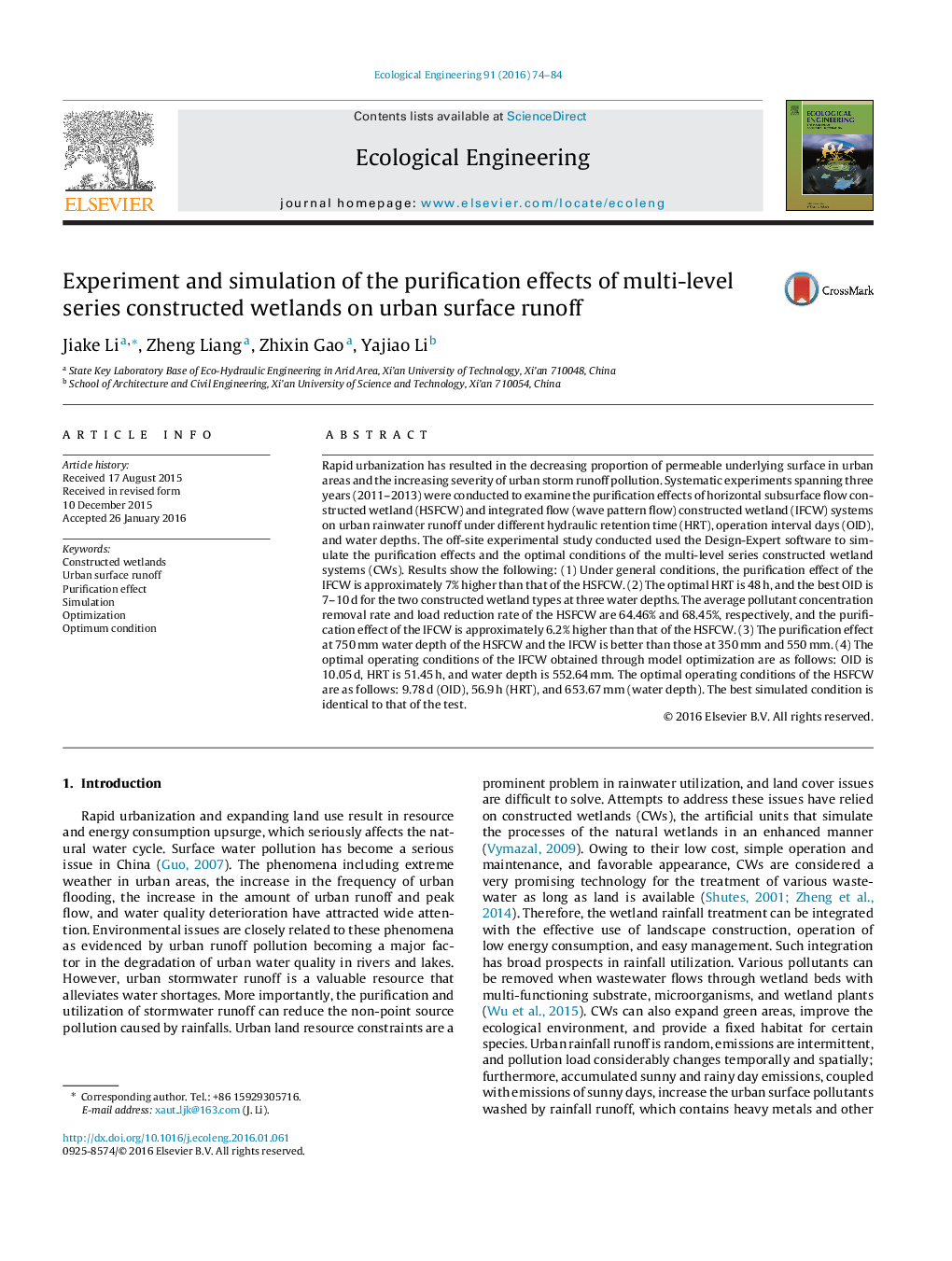| Article ID | Journal | Published Year | Pages | File Type |
|---|---|---|---|---|
| 6301285 | Ecological Engineering | 2016 | 11 Pages |
Abstract
Rapid urbanization has resulted in the decreasing proportion of permeable underlying surface in urban areas and the increasing severity of urban storm runoff pollution. Systematic experiments spanning three years (2011-2013) were conducted to examine the purification effects of horizontal subsurface flow constructed wetland (HSFCW) and integrated flow (wave pattern flow) constructed wetland (IFCW) systems on urban rainwater runoff under different hydraulic retention time (HRT), operation interval days (OID), and water depths. The off-site experimental study conducted used the Design-Expert software to simulate the purification effects and the optimal conditions of the multi-level series constructed wetland systems (CWs). Results show the following: (1) Under general conditions, the purification effect of the IFCW is approximately 7% higher than that of the HSFCW. (2) The optimal HRT is 48Â h, and the best OID is 7-10Â d for the two constructed wetland types at three water depths. The average pollutant concentration removal rate and load reduction rate of the HSFCW are 64.46% and 68.45%, respectively, and the purification effect of the IFCW is approximately 6.2% higher than that of the HSFCW. (3) The purification effect at 750Â mm water depth of the HSFCW and the IFCW is better than those at 350Â mm and 550Â mm. (4) The optimal operating conditions of the IFCW obtained through model optimization are as follows: OID is 10.05Â d, HRT is 51.45Â h, and water depth is 552.64Â mm. The optimal operating conditions of the HSFCW are as follows: 9.78Â d (OID), 56.9Â h (HRT), and 653.67Â mm (water depth). The best simulated condition is identical to that of the test.
Related Topics
Life Sciences
Agricultural and Biological Sciences
Ecology, Evolution, Behavior and Systematics
Authors
Jiake Li, Zheng Liang, Zhixin Gao, Yajiao Li,
